What to feed baby sulcata tortoise
How to Care for a Baby Sulcata Tortoise
Being a new tortoise owner can be intimidating; with all their temperature and dietary needs, it can be overwhelming for sure. However, once you familiarize yourself with the requirements of taking care of a tortoise, it becomes much easier. In this article, you’ll find instructions on how to care for a baby Sulcata tortoise and other important information about the species itself.
We’ll discuss their environmental, dietary, and other health-related needs and provide some helpful tips for raising a happy Sulcata tortoise!
All About the Sulcata Tortoise
First things first, the Sulcata tortoise is one of the largest tortoise species in the world. Even though your baby tortoise may look small now (they are typically only around two inches at birth), they can grow beyond 30 inches in maturity.
They generally are distinguished by their brown shell, yellowish skin, and the spurs on the back of their legs. Sulcatas tend to make great pets, and they are known for their goofy, playful attitudes! However, they are a considerable commitment. Sulcata tortoises can live to be over 100 years old, well beyond the average human lifespan. So they are likely a commitment for not only your life but perhaps even the generations following you.
It is good to keep in mind that they do not reach maturity until they are around fifteen to twenty years old since their lifespan is so long. They will keep growing around that time and can weigh over 100 pounds! Keep their size and growing needs in mind when preparing for caring for a Sulcata.
When caring for a baby Sulcata tortoise, it is important to keep them in an indoor enclosure with a UVB and heat lamp, hygrometer, and bedding.
Below are my recommended essentials that you will need to care for a baby Sulcata tortoise.
Baby Sulcata Tortoise Enclosure
Best light for baby Sulcata Tortoise
Hygrometer
Bedding for baby Sulcata Tortoise
Baby Sulcata Tortoise Habitat Requirements
These animals are evolutionarily adapted to dry, hot environments. However, as hatchlings and babies, Sulcata tortoises will require more of a wet and humid environment. To achieve this, you should occasionally spray their substrate with water, keep a water bowl in their enclosure, and have a humidity hide box if possible.
However, as hatchlings and babies, Sulcata tortoises will require more of a wet and humid environment. To achieve this, you should occasionally spray their substrate with water, keep a water bowl in their enclosure, and have a humidity hide box if possible.
Baby Sulcata tortoises should be initially raised in an indoor environment. They shouldn’t be moved outdoors until they have grown and matured enough to defend themselves against any potential threats – this will likely be around the two-year mark. So, in the first two years of its life, you should purchase a large enclosure for it to live in. A 50-gallon tank or larger is recommended for Sulcatas. You might need to have a covering over the tank to achieve proper humidity. In this tank, you will need to provide the following:
- A UVB light source AND a basking temperature bulb
- The temperature of their enclosure should ideally be in the 80s.
- A hygrometer to monitor their humidity levels (which should be around 70%)
- Bedding made out of a suitable material (dirt/sand mix, cypress mulch, orchid bark, etc.
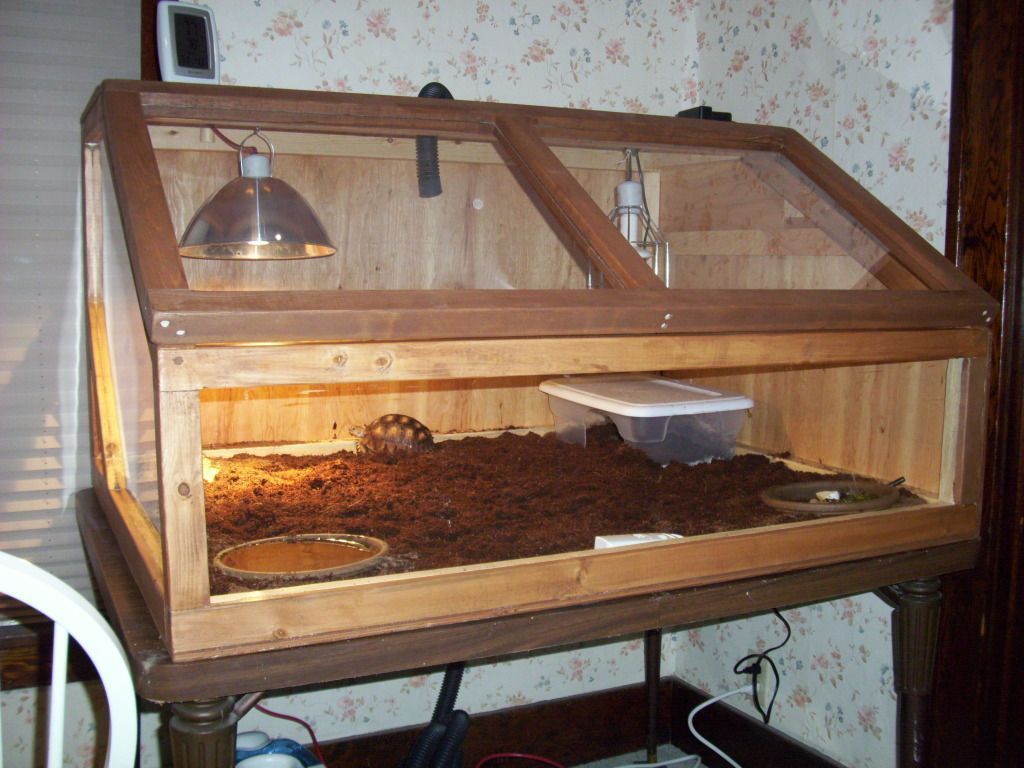 are recommended). You can learn more in my article on the best substrate for Sulcata tortoise.
are recommended). You can learn more in my article on the best substrate for Sulcata tortoise. - I also recommend that you get some accessories such as a piece of wood or large rocks.
Once you’ve set up their enclosure, monitoring it is the next step. Make sure to replace their bedding once every week at best. Watch their humidity levels and make sure their heat bulbs are always functional.
Once they get older and you move them outside, you can make a DIY Sulcata tortoise enclosure.
Baby Sulcata Tortoise Diet
As a baby, a Sulcata tortoise’s diet should be primarily plant-based. There are plenty of household vegetables and greens that Sulcata tortoises will love!
To keep their diet interesting, it is recommended that you rotate their foods and mix and match what greens they are eating. Some greens that Sulcata tortoises love are spring mixes, lettuce, kale, turnip greens, lawn grass, clovers, and various flowers (rose petals, geraniums, hibiscus, etc. ). Some greens that should be limited include oxalate high greens including collard greens, parsley, spinach, and rhubarb.
). Some greens that should be limited include oxalate high greens including collard greens, parsley, spinach, and rhubarb.
You can learn more in my article on what vegetables can you feed a Sulcata tortoise.
Make sure to soak their greens with water to ensure your Sulcata is getting enough water. Also, include a shallow pool for them. Sulcatas don’t need much water, but it is a good idea to provide some just in case they aren’t getting enough from their food.
If you want to give your Sulcata a treat every once and a while, try letting them nibble on some fruit! Since fruits have a high sugar content and differ from a Sulcata’s wild diet, it is best to only provide fruit as an occasional treat. They tend to love strawberries, apples, pears, and berries! Treat it like candy. Even though candy is delicious and harmless to eat every once and a while, it is unhealthy to eat gummy bears with every meal. The same logic applies to fruit for tortoises.
Watching Their Health
Once you’ve set up a proper habitat and established a healthy diet for your Sulcata tortoise, just make sure to be observant of their behavior and appearance. If a tortoise is unhealthy, they are going to show it. Being able to understand what an unhealthy vs healthy tortoise looks like is very important.
If a tortoise is unhealthy, they are going to show it. Being able to understand what an unhealthy vs healthy tortoise looks like is very important.
Some signs of an unhealthy tortoise include:
- Discharge from their eyes, nose, or mouth
- Lethargy and noticeable weight loss
- Loss of appetite/not eating
- Sunken eyes/drooping head
- Watery/loose stools
Some signs of a healthy tortoise include:
- Active behaviors
- Healthy appetite
- Bright, clear eyes
- Solid looking shell with no abnormalities
If you are concerned for your Sulcata’s health, make sure to get them looked at by a veterinarian. Keeping your baby tortoise happy and healthy while they grow is incredibly important. Following the steps in this guide and keeping a close eye on them as they grow will help you ensure that they are living a carefree, healthy lifestyle!
- turtleholic
- Sulcata Tortoises, Tortoise
Sulcata Tortoise Background and Care Recommendations
Natural History of Sulcata TortoisesSulcata tortoises are native to more northern parts of Africa, ranging from the southern edge of the Sahara down through the arid countries, including Senegal, Mauritania, Mali, Niger, Chad, the Sudan, and Ethiopia, up through the dry, hot Massaua coast bordering the Red Sea.
Captive bred and imported Sulcatas can be found increasingly found in the pet trade. The sulcata is the largest of the African mainland tortoise, with specimens easily reaching 24-30 inches (60-75 cm) in carapace length and 80-110 pounds (36-50 kg). The largest on record was a male resident of the Giza Zoological Gardens (Egypt) who weighed in at 232 lb (105.5 kg) and measured 41.6 inches (104 cm) over the carapace (Flower, 1925, in Stearns). The oldest recorded specimen in captivity, also at the Giza Zoological Gardens, was 54 years of age.
Sulcatas come from some of the Sahel, the hottest, driest area in Africa. Some regions may not get rain for years. To make the most of available moisture, their skin is resistant to fluid loss but, when exposed to moisture, may become highly permeable. Towards this end, they will excavate pallets or burrows in the ground to get to areas with higher moisture levels; in the wild, they may spend the hottest part of the day in these microhabitats.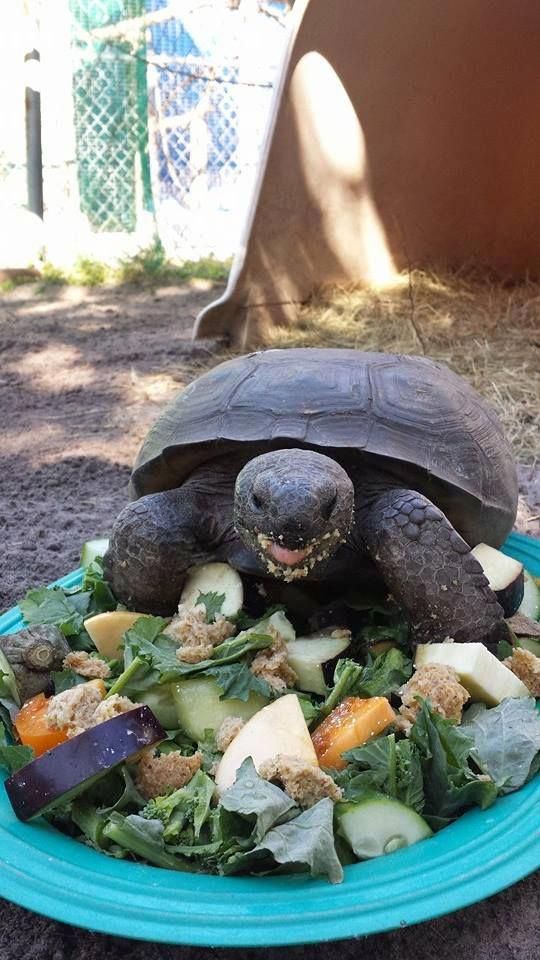 Burrows may average 30 inches in depth; some dig tunnel systems extending 10 feet or more underground. Sulcatas are, like most turtles and tortoises native to dry areas, extremely efficient in their use of water.
Burrows may average 30 inches in depth; some dig tunnel systems extending 10 feet or more underground. Sulcatas are, like most turtles and tortoises native to dry areas, extremely efficient in their use of water.
In captivity, a similarly hot and dry environment must be provided year round. Unlike the California desert tortoises, the sulcatas do not hibernate. While they can tolerate some surprisingly low temperatures, they cannot be allowed to get both chilled and wet or kept outdoors in chill, damp weather.
Behavior of Sulcata TortoisesSulcatas like to move around and are very strong — they must have a large area in which to freely and widely roam. Sulcatas also need to burrow away from the heat and do so by retreating to their pallets or into muddy wallows where they will stay for hours, flipping cool mud up onto their backs.
Whether housed indoors or out, Sulcatas roam about and are voracious eaters. Like many tortoises, they are also climbers.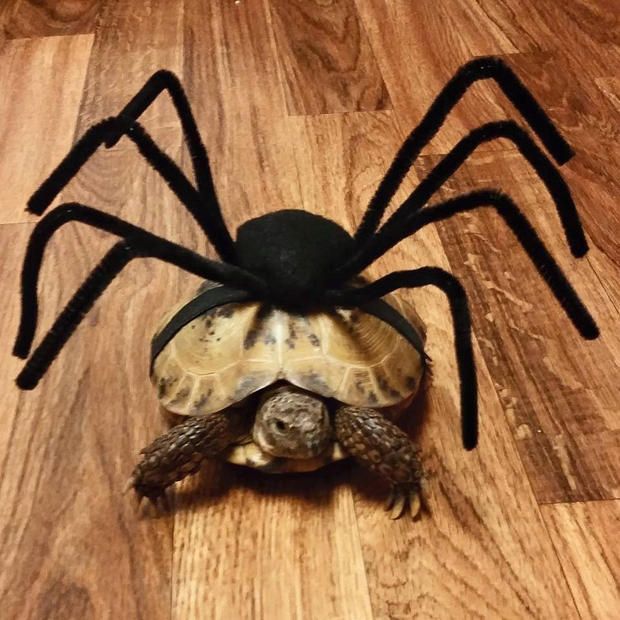 Care must be taken to assure they are not given the opportunity to climb things that are too steep resulting in their toppling over. If they flip onto their backs and are not able to right themselves, they may die. Sulcatas also need to burrow away from the heat and do so by retreating to their pallets or into muddy wallows where they will stay for hours, flipping cool mud up onto their backs.
Care must be taken to assure they are not given the opportunity to climb things that are too steep resulting in their toppling over. If they flip onto their backs and are not able to right themselves, they may die. Sulcatas also need to burrow away from the heat and do so by retreating to their pallets or into muddy wallows where they will stay for hours, flipping cool mud up onto their backs.
Keep dangerous objects out of their area. Steps, dogs, raccoons and children are among some of the dangers that must be guarded against. Sulcatas are voracious, if not always smart, eaters and will ingest anything small enough and colorful enough. Provide variety and security. Tortoises do not bask on the bare open ground. Provide a cluster of sturdy, low growing plants they can crowd in amongst. Provide an interesting terrain by leaving (or building) some low hummocks, smooth rocks, pieces of wood, clumps of weeds and edible plants.
Diet of Sulcata TortoisesThe phrase used most commonly by sulcata owners to describe their tortoises is “eating machine. ” Sulcatas graze and forage for hours during the day. In captivity, they need to be able to graze on pesticide- and herbicide-free grasses and weeds.
” Sulcatas graze and forage for hours during the day. In captivity, they need to be able to graze on pesticide- and herbicide-free grasses and weeds.
- Grasses and hay: Sulcata tortoises NEED access to grasses and hay on which to graze. This is the bulk of their diet (90%) and should be from pesticide- and herbicide-free grass and grass cuttings, cheat grass, clover, edible flowers (nasturtium, geraniums, hibiscus, rose petals) and shrubs.
- Avoid feeding predominately alfalfa hay, as this is high in oxalates and can cause stone formation within the bladder, kidney failure and decrease life-span.
- Grass hays to offer include: Timothy, meadow grass, oat hay, orchard grass.
- Greens and vegetables:
- Greens to offer include: collard greens, kale, mustard, turnip and dandelion greens. Limit greens that are high in oxalates, such as: parsley, spinach, rhubarb, beet greens and collard greens.
- Vegetables should be about 10-15% of the diet.
 These can include: grated raw carrots, winter squash, sweet potatoes, pumpkin, broccoli, corn on the cob; greens such as collards, dandelions, escarole, romaine, kale.
These can include: grated raw carrots, winter squash, sweet potatoes, pumpkin, broccoli, corn on the cob; greens such as collards, dandelions, escarole, romaine, kale.
- Fruits:
- Fruits should be fed sparingly, as a treat. These tend to be high in sugar and water content, both of which sulcatas are not accustomed to receiving in the wild. Fruits that are appropriate to offer as treats include: strawberries, chunks of organically grown bananas with skin, cantaloupe with rind attached, berries; peaches (no pits), apricots (no pits), pears, apples
- Supplementation:
- At MedVet Hilliard, we recommend using a multivitamin supplement (such as Zoo-med’s Reptivit), twice weekly.
Sulcatas respond to bright colors, so always include at least one vividly colored food in your selection. This also means that you must keep inedible brightly colored things away from them!
Housing Sulcata TortoisesDue to the tremendous amount of room these tortoises need to roam and graze, keeping them indoors year round is not advised. Temporary indoor housing should be provided when the weather is cold/damp.
Temporary indoor housing should be provided when the weather is cold/damp.
- Outdoor housing:
- Must be provided a dry, heating housing unit to which they will return to at night and during inclement weather. If they will not go in and out of this housing on their own, they need to be physically moved.
- Daytime temperatures during much of the year should range from 85F-105 F (29-40 C) during the day. At night, temperatures can drop into the 70s F (21-26 C) in their enclosure.
- It is recommended that fencing not be see-through, as many owners report their sulcatas trying to climb or push over/through these barriers to get to the other side.
- Sulcatas enjoy burrowing and are very good at doing so. They should be provided material in which to dig and burrow. Ideas for burrowing material include hay, leaves, grasses or straw.
- When placing fencing, keep in mind that sulcatas will dig/burrow and could dig out of their enclosure. Be sure fencing is not only tall enough, but deep enough to keep your sulcata from escaping either by charging through or digging underneath any fencing.
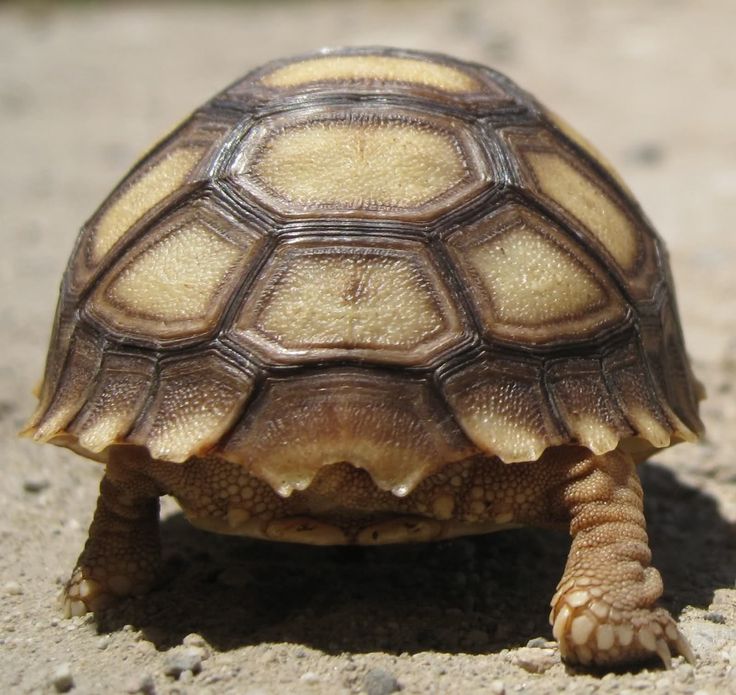
- When placing fencing, keep in mind that sulcatas will dig/burrow and could dig out of their enclosure. Be sure fencing is not only tall enough, but deep enough to keep your sulcata from escaping either by charging through or digging underneath any fencing.
- Sulcatas need to be kept dry. Provisions need to be taken to keep their enclosure free of damp materials and excess moisture.
- A shallow water bowl, with sides low enough for the tortoise to reach into, should be available at all times if there is no wallow available. Tortoises do not swim, and can drown easily. You need to make sure they can easily access the water but that it is not any deeper than the tortoise’s bridge, the section of shell that joins the carapace (top shell) and plastron (bottom shell).
- This should be changed daily.
- Indoor housing
- Due to the tremendous amount of space a sulcata needs, indoor housing should be temporary during times of cold/damp weather.
- Indoor housing must include both basking and cooler retreat areas, and a den box in which to burrow. An area for feeding and a shallow water dish must also be provided. Ultraviolet B lighting must be provided as well as suitable temperature ranges during both the day (80 F, 27 C) with a basking area (100 F, 39 C) and night (72 F, 22 C).

- The most commonly encountered health problems are a result of poor diet and/or husbandry (environment and living conditions).
- Calcium deficiency: This can manifest in several different ways; including shell softening and metabolic bone disease.
- This is prevented by making sure you are feeding an appropriate diet and that your sulcata has access to natural sunlight or a full spectrum UVA/UVB light source.
- High protein: This can manifest in several different ways: including pyramiding of the shell and uric acid build up in the bladder causing a life threatening urinary obstruction.
- This is prevented by feeding an appropriate diet.
- Respiratory disease: This is characterized by discharge from the eyes or nose and possibly noisy/raspy breathing.
- This is prevented by feeding an appropriate diet and living conditions.
- If at any time your tortoise is overly lethargic, not eating or displaying other signs of illness, it is important to have him/her evaluated by a veterinarian with experience treating reptiles.
 If they are sick for an extended period of time, many reptiles will develop liver and kidney damage that is irreversible, so they should be evaluated sooner rather than later.
If they are sick for an extended period of time, many reptiles will develop liver and kidney damage that is irreversible, so they should be evaluated sooner rather than later. - Tests that may be recommended include radiographs and/or bloodwork to assess overall health and help direct treatment.
- Calcium deficiency: This can manifest in several different ways; including shell softening and metabolic bone disease.
We hope this article gives you the tips you need to keep your of Sulcata Tortoises healthy.
Additional Information about of Sulcata Tortoises- Kaplan’s Herp Care Collection: http://www.anapsid.org/sulcata.html
- com: http://www.tortoise.com/sulcata.html
- Veterinary Partner: http://www.veterinarypartner.com
How and what to feed red-eared, marsh and other aquatic turtles
Aquatic ornamental turtles are frequent inhabitants of home aquariums. These cute reptiles are very fond of children and adults. In order for the turtle to live a long and fulfilling life in a closed tank, you need to create appropriate living conditions for it and pay special attention to the right diet.
In order for the turtle to live a long and fulfilling life in a closed tank, you need to create appropriate living conditions for it and pay special attention to the right diet.
In this article, we will look at popular brands of complete food and treats for aquatic turtles, how many times a day, at what time and how to feed them correctly, whether turtles need mineral and vitamin supplements, differences in the diet of adults and small pets, as well as depending on from the type of turtle.
Features of feeding aquatic turtles
Aquatic turtles eat plant and animal food. During the period of growth and formation of the body, turtles need food rich in protein. Natural products can be added to the diet in combination with ready-made dry food designed specifically for aquatic turtles.
Natural products are served to turtles in small pieces. A single portion is determined so that in a 30-minute snack, the turtle can completely eat the entire piece of food served. For young reptiles, 2-3 pieces of 1 cm3 are usually enough, and for feeding adult turtles, the size of the pieces should be slightly increased. If after a snack there is a half-eaten piece in the aquarium, the portion can be reduced at the next feeding.
For young reptiles, 2-3 pieces of 1 cm3 are usually enough, and for feeding adult turtles, the size of the pieces should be slightly increased. If after a snack there is a half-eaten piece in the aquarium, the portion can be reduced at the next feeding.
A few more important rules for feeding aquatic turtles:
- natural food should be thermally processed before feeding the reptile;
- food served must be at room temperature;
- food can be placed in the aquarium in a special feeder located on the ground in order not to pollute the water;
- feeding with tweezers is allowed;
- To create a balanced diet, it is allowed to combine prepared food with natural food.
Overview of artificial food for turtles
Dry food is recommended not as a main food for aquatic turtles, but as a supplementary food that goes well with natural food.
Dry food for aquatic turtles offers a wide range of products from different world manufacturers.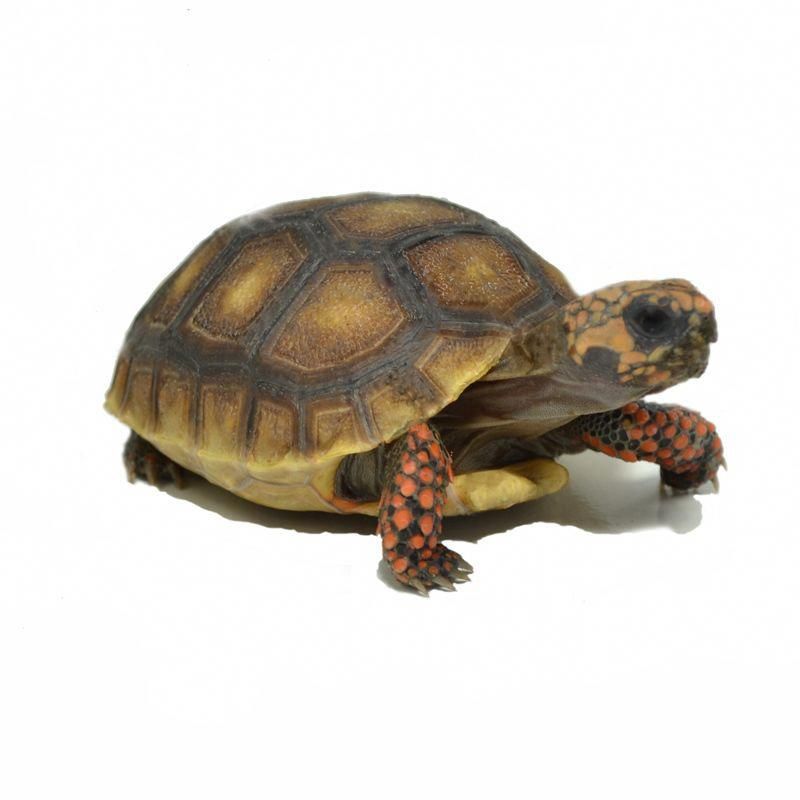 We will briefly review the types of artificial food and other healthy treats for pet reptiles.
We will briefly review the types of artificial food and other healthy treats for pet reptiles.
Complete dry food
Complete dry food can be given to baby and adult turtles every day. The composition of such a product includes useful components of plant and animal origin, selected taking into account all the requirements of the reptile's body.
Popular brands:
- Sera;
- Zoomir;
- Tetra ReptoMin;
- Dajana.
Treats
Non-complete feeds are classified as Treats. They can only be given to adult turtles and no more than once a week.
Popular treats:
- JBL Tortil;
- Tetra ReptoDelica Snack;
- Sera Raffy Royal;
- Zoomir "Tortila M" Strong shell, etc.
Vitamin-mineral complexes
At home, turtles cannot get all the trace elements necessary for their body, which they extract in the natural environment. So that the reptile does not get sick and feels good, it must be periodically fed with special vitamin and mineral supplements. You can buy ready-made complexes in pet supply stores.
So that the reptile does not get sick and feels good, it must be periodically fed with special vitamin and mineral supplements. You can buy ready-made complexes in pet supply stores.
Vitamin and mineral supplements for turtles:
- MIX – mineral supplement with calcium;
- MIX - general strengthening supplement;
- mineral block "Tortila";
- Beaphar Turtle Vitamin - vitamin complex;
- FIORY Tarta Vigor - feed supplement with vitamins;
- mineral block Ca+D3 "Tortila M";
- Sera vitamins;
- Dajana – mineral stone for aquatic turtles.
Adult tortoise and small pet diet
The diet of aquatic turtles must be combined - natural food in combination with artificial food. Consider what foods can and cannot be given to aquarium reptiles.
Useful and harmful natural products for aquatic turtles:
- You can give low-fat river fish in crushed form with chopped bones.
 You can not feed turtles with bony and oily fish.
You can not feed turtles with bony and oily fish. - May be fed with live gammarus and small crustaceans.
- Raw shrimp and crabs are allowed.
- Turtles should not be fed squid, although they love them very much.
- It is strictly forbidden to give reptiles the meat of terrestrial animals and factory meat products (sausages, canned food, etc.). The digestive system of reptiles does not absorb such food.
- Occasionally, you can treat the turtle with pieces of beef heart and liver. These products feed the body with vitamin A.
- It is allowed to feed the reptile with food mice and frogs.
- Natural plant foods for turtles include carrots, lettuce, apple pulp, herbs, sprouted oats and barley.
- Non-poisonous grassland plants, as well as algae and some types of aquatic plants, can be included in the diet.
- Limited quantities of pear, watermelon, melon, banana, apricot and raspberry pieces.
- Do not give turtles citrus fruits, nuts, soybeans, beans, cabbage, bread, flour products, cereals, fish waste, dairy products, chicken eggs.

- Foods high in phosphorus, stromagenic substances and oxalates are harmful to reptiles.
- With pleasure and benefit, turtles eat various insects and larvae living in the water. They can be fed with coretra, bloodworms, locusts, crickets, fly larvae, earthworms and moths. The insect must first be decapitated. Can be given dried, frozen, or live.
- Live and thawed mollusks, land snails, snails, marizas, etc. are well absorbed by the reptile organism. But it is better not to treat a turtle with slugs without shells.
Turtle menu specifics depending on their species
Water turtles are more often predators, so the basis of their diet is food of animal origin. If your aquarium has a semiaquatic or marsh reptile that prefers vegetarian food, the diet will be based on plant foods. In any case, the nutrition for the turtle must be balanced and varied so that the body of the domestic reptile fully receives all the necessary substances and trace elements.
Features of the diet of turtles of different species:
- The red-eared turtle prefers fry, small fish with bones, insect larvae, chicken fillet, gammarus and shrimp. From plant foods, you can give apples, lettuce and slices of fresh cucumber.
- Chinese amphibian Trionix enjoys beef liver, heart, lean fish, fry and small frogs. From plant foods, she will like fresh herbs and slices of tomato.
- The European bog turtle loves lean meats, fish with small bones, and plant foods.
- Musk turtle prefers to feed on algae, fish and aquatic insects.
How often and at what time to feed the turtles
It is recommended to feed the turtle at the same time. The first three years of life they are fed once a day, mainly food of animal origin. As they grow, the need for such food is lost, so plant foods and dry food become the main part of the diet.
Adult turtles are fed once every 2-3 days. In summer, turtles eat more often, but in small portions, and in winter they may not eat for several days, and then gladly absorb the increased portion. In the cold season, it is recommended to add vitamin and mineral supplements to the turtle's diet.
In the cold season, it is recommended to add vitamin and mineral supplements to the turtle's diet.
After the turtle has been fed, the remains of food are removed from the aquarium. In the subsequent feeding, fresh food is served. You can not feed the reptile with spoiled foods, they can cause poisoning of the body.
Major Owner Mistakes
Beginning pet turtle owners often make feeding and diet mistakes that can cause serious health problems for the reptile.
The most common owner mistakes are:
- feeding the turtle food from his table - salty, fried, smoked and seasoned dishes are very dangerous for the body of turtles;
- regular feeding with vitamin and mineral supplements - such complexes should not be given to turtles more than once a week;
- make up an unbalanced diet, for example, they regularly treat a reptile with fish, forgetting about the need to feed other healthy foods, which leads to an excess of vitamin B and a lack of other trace elements in the body.

These are the most common mistakes in feeding domestic aquatic turtles, as a result of which reptiles develop various health problems.
The following symptoms testify to improper feeding of the tortoise: coordination of the movement of the reptile is disturbed, it refuses to eat, shows lethargy, and motor activity decreases. An unbalanced diet of small turtles leads to improper development of the body and growth retardation. To eliminate such health problems for the turtle, make up a healthy and balanced diet for it!
Never try to treat a water turtle yourself. If there are certain symptoms that indicate an unhealthy condition, seek the help of a veterinarian specializing in the treatment of domestic reptiles. An experienced specialist will also tell you in detail how and what to properly feed waterfowl aquarium turtles.
Proper nutrition is the key to a healthy and long life of a domestic reptile!
What to feed tortoises at home, what not to feed
Most species of tortoises eat plant foods.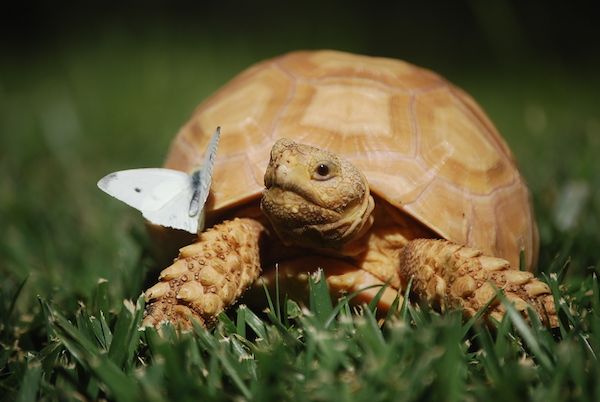 Therefore, if such a turtle is kept at home, then you need to be very careful about its diet. People who faced a debilitating problem began to keep special food journals for their pets:
Therefore, if such a turtle is kept at home, then you need to be very careful about its diet. People who faced a debilitating problem began to keep special food journals for their pets:
- daily;
- weekly;
- monthly.
As a rule, the menu is prepared in advance, with planning for each day. This takes into account all the necessary vitamin supplements, in the form of calcium and various amino acids. If you purchased a turtle, and you don’t know how to feed it, then for a start you should at least make a preliminary planning of its diet. In the process of feeding, it will become clear how to adjust her nutrition. In order not to risk it, it is better to seek information from a specialist or “dig” on the Internet, where there is a lot of useful information.
It is very important that nutrition is optimal and balanced. The turtle should not be overfed, but should not be allowed to starve. Her diet should include foods rich in essential vitamins and minerals in order to ensure normal development and growth for the pet.
If the turtle eats a lot of different foods, this can negatively affect the health and longevity of the pet. As a result of overeating, the turtle can develop diseases of the liver and gastrointestinal tract.
With insufficient food, the turtle will not receive the required amount of nutrients, which can lead to developmental defects.
Although tortoises eat mostly plant foods, care should be taken to ensure that the tortoise also consumes animal foods. It can be no more than 5% of the total diet, but this is quite enough for its normal development.
Those who do not know how to feed this animal can purchase special artificial supplements with vitamins, proteins and other trace elements. How many such additives are required to the main diet is indicated on the package.
A complete list of permitted plants and vegetables can be found here.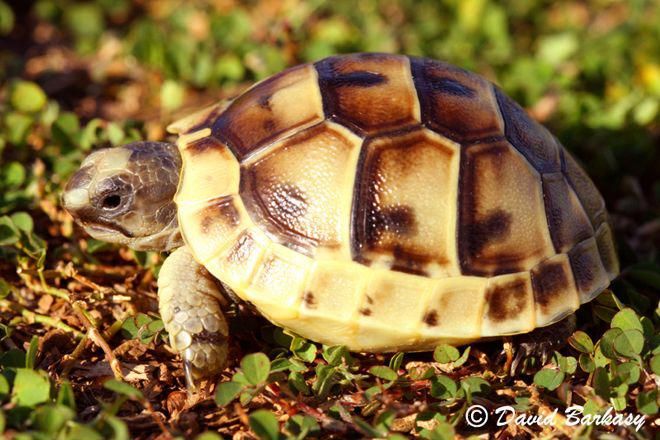
Contents
- 1 Turtle diet
- 2 Should turtles be fed
- 3 What do turtles eat in their natural habitat?
- 4 What should not be fed to tortoises?
- 5 Turtle diet in winter and summer
- 6 In addition
Turtle diet
- Greens - 75%;
- Fruits, berries and vegetables - 15%;
- Complex dishes in the form of various cereals - 5%;
- Vitamin supplements - 5%.
In formulating her diet, one must take into account the fact that certain substances, such as vitamin D 3 , can adversely affect her health. You should carefully study the list of substances prohibited for land turtles.
It should be remembered that in animals that enter captivity, there is a shift in her behavior. With a lack of nutrients, she will begin to eat everything, including the earth in the terrarium. To prevent this from happening, you should take great responsibility in organizing the nutrition of your pet. With proper and balanced nutrition, the turtle will delight others for many years.
With proper and balanced nutrition, the turtle will delight others for many years.
Therefore, before you start feeding an animal, you should make an approximate diet:
- As mentioned above, the basis of the diet is greens, in the form of lettuce and dandelion leaves, plantain and alfalfa, thistle and sorrel, lawn grass, as well as leaves and stems of legumes (peas or beans). In addition to this greenery, turtles are happy to eat inflorescences of various plants. The main component must always be in the feeder, and the reptile will decide how much to eat.
- Vegetables are in second place. Turtles love to feast on pumpkin, fresh carrots, ripe zucchini, young beets and radishes. Once a month, the turtle can be given a cucumber or horseradish.
- Apples and pears must be included in the list of berries and fruits . From time to time, apricots, plums, raspberries, strawberries, and watermelon can be included in the diet, but in small quantities.

Is it necessary to water the turtle
As a rule, tortoises get the main dose of moisture from vegetables, fruits and greens. Most experts say that it is enough to provide the turtle with a bath of water once a week and it will not suffer from a lack of moisture. The fact is that turtles are able to replenish the lack of water through the skin. If a turtle swims in a bowl of water for 10 minutes, then this is quite enough for her.
There are cases when, after acquiring a turtle, this small animal still suffers from a lack of moisture. In such cases, for some time you should provide the turtle with daily baths with water. Water should be poured up to half of the body so that the head peeks out of the water. To this end, at first, you can install a drinker with clean water so that the turtle can drink at any time.
What do turtles eat in their natural habitat?
The diet of tortoises consists of plant foods. Being in natural conditions, the turtle consumes all the necessary nutrients that ensure its normal development. At the same time, the turtle always feels which microelements it lacks at one stage or another of its life path, and it does an excellent job of this task, finding the food that it needs.
At the same time, the turtle always feels which microelements it lacks at one stage or another of its life path, and it does an excellent job of this task, finding the food that it needs.
A turtle can be in a state of searching for scarce food for a long time without harming its health. You can learn a lot of interesting things about these amazing animals by reading the relevant information on the Internet.
What should not be fed to tortoises?
Unfortunately, the list of prohibited products is very extensive and should be read. This list includes cockroaches, crickets, eggshells, potatoes, garlic or onions, various meat products (including sausage and minced meat), bread, milk, various cereals (except for rolled oats), citrus peels, cherries, seeds from any berries . These foods can cause liver disease, which will significantly reduce its life expectancy. Therefore, when starting to draw up her diet, one should take into account the harmful effects of the above products on the turtle's liver and not include them in the diet.
A complete list of prohibited products can be found here.
Turtle nutrition in winter and summer
Despite the fact that the animal is in captivity, it can feel the approach of cold weather, which contributes to a change in taste preferences. In the summer, the turtle eats more juicy foods, then with the advent of a colder season, it prefers soaked hay and less juicy vegetables. In any case, you need to monitor the behavior of the turtle, as well as the fact that it consumes more from food.
In addition to
Being in captivity, the turtle tries to follow its natural instincts and may hibernate. Naturally, this can be facilitated by certain conditions of detention associated with a decrease in ambient temperature within the zone of keeping the animal. It can be not only winter, but also summer hibernation. In nature, turtles hibernate for two main reasons - this is a cold snap or lack of the required amount of food. To prevent this from happening, you should maintain the temperature at an appropriate level, as well as provide the pet with a variety of foods. It should always be remembered that even a turtle must sleep under certain conditions, which is extremely difficult to provide for her at home.
It should always be remembered that even a turtle must sleep under certain conditions, which is extremely difficult to provide for her at home.
In order not to risk the health of a small pet, you need to provide it with the appropriate mode, which is on the border of the maximum level. Under such conditions, the turtle is unlikely to think about its hibernation, especially if it has all the necessary products.
It is very important that the heating is similar to the warmth that the turtle felt when it was under the rays of the sun. After all, in the sun, the turtle not only warms itself, but also receives a dose of UV radiation, which helps to better absorb calcium in the body . Without calcium, the turtle will not be able to fully develop and this should always be remembered. Therefore, the presence of a UV lamp is mandatory, as is its inclusion for several hours throughout the day.
From this we can conclude that the future of a small pet depends entirely on who cares for him.











